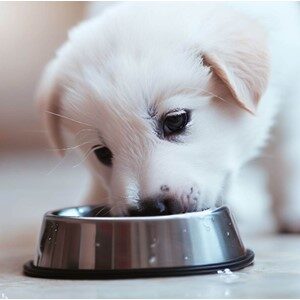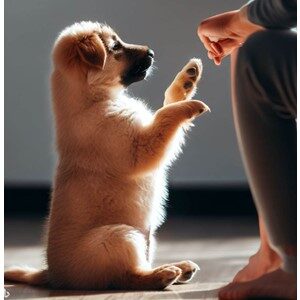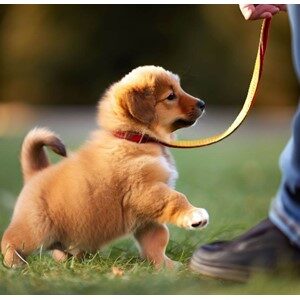How To Train A Puppy
Welcoming Home Your Puppy!
Introduction
Bringing a new puppy into your home is an exciting and rewarding experience, but it also comes with its fair share of challenges. Training your puppy is a must. Another benefit of puppies is that they’re too young to have picked up many bad habits—they’re more or less a blank slate. But that also means it’s up to you to teach your furry friend whatever he needs to know about being part of your family.
How to train a puppy will help you with this crucial step to ensure that your furry friend grows up to be a well-behaved and happy member of your family. When training a puppy, you will need to set aside time, patience, and consistency, treats, and lots of verbal praise, but the end results are well worth the effort. In this article, we will cover everything you need to know about how to train a puppy effectively. Check out the following article for additional information on: Puppy Proofing Your House.
Getting Ready for Puppy
Before your new puppy arrives at home, there are some things you need to do to get the house ready for him. You will need to puppy-proof your home. You must know ahead of time the following things:
- Where will he sleep
- Where can he play
- Where can he go to the bathroom to relieve himself
- What areas of the house are off-limits
- Water and food bowls
- Leash
- Collar
- Name tag
- Type of dog bed and where it will be placed
- Dog food
- Treats
- Know the rules for walking your dog in your community. Some areas require you to pick-up dog poop and have him on a leash.
Knowing these things ahead of time can save you many headaches later. You will need to set-up a schedule for his daily exercise such as walks and his training sessions.
When teaching your dog always use positive reinforcement. Do not hit or yell at your puppy when they don’t follow your instructions.
When training your puppy, you will need some treats and positive verbal praise whenever you can. Consider using bits of chicken, hot dogs, or cheese to reward your puppy when he does the action you are training him to do. Only reward him for doing the correct behavior.
The biggest thing you need to do at day one is to not encourage bad behaviors, so you won’t have to worry about them in the future.
Understanding Your Puppies Development
Before diving into training techniques, it’s important to understand the developmental stages your puppy goes through. This knowledge will help you tailor your training methods to your puppy’s specific needs.
- Early Socialization (2-12 Weeks): This is the prime time to expose your puppy to new people, animals, and environments. Socialization helps prevent fear and aggression issues later.
- Teething State (3-6 Months): During this phase, your puppy will chew on everything to relieve his teething discomfort. You can help him by providing the appropriate chew toys to save your furniture and other things around the house.
- Adolescence (6-18 Months): Your puppy will go through a rebellious phase. Be patient and consistent with his training during this time.
Basic Puppy Training Commands
When you bring your puppy home, you should begin to train them. Start with the basic commands below:
- Sit: Teach your puppy to sit by holding a treat above their head and moving it back towards his tail. As their head goes up, their read end should naturally go down. When his rear hits the floor give your dog a treat and say “Good Sit”. Repeat this until he sits on command without a treat.
- Stay: Ask your puppy to sit, then take a step back and say “” Gradually increase the distance and the duration as your puppy becomes more reliable. Give him a treat every time he stays in the sitting position and say “Good Stay.”
- Come: Encourage your puppy to come to you by using a happy and inviting tone and say “come” after the “sit” command. Reward him with treats and verbal praise when he comes to you.
- Lie Down: This command is similar to teaching the “sit,” use a treat to guide your puppy into a lying position. Say to your puppy, “Lie down.” When he lies down reward him with a treat and verbal praise. This command can be particularly useful for calming excited puppies.
- Leave It/Drop It: These commands are essential for preventing your puppy from picking up harmful objects or food items. Use treats and verbal praise to reward him for compliance.
Positive Reinforcement Training
Positive reinforcement is the most effective and humane way to train a puppy. It involves rewarding good behavior with treats, praise, or toys. Here is how to use positive reinforcement effectively:
- Timing: Reward your puppy immediately after they perform the desired behavior to strengthen the association between the action and the reward.
- Consistency: Be consistent in your commands and rewards. Use the same word for a particular action every time. Don’t reward for bad behavior.
- Varied Rewards: While treats are excellent motivators, vary the rewards occasionally with toys, verbal praise, or affection to keep your puppy engaged. Note: Keep treats to no more than 10% of your puppy’s total caloric intake for the day. This will help to control any weight gain.
Check out our article on Positive Reinforcement for Dog Training.
House Training
House training is one of the most challenging aspects of puppy training. You can achieve it with patience and consistency. Here are some tips:
- Establish a Routine: Take your puppy outside first thing in the morning, after eating or drinking, and before bedtime. Praise and reward them when they relieve themselves outdoors. You may want to give him a treat and verbal praise.
- Crate Training: Use a crate to confine your puppy when you cannot supervise him. Dogs instinctively avoid soiling their sleeping area, so this can help with housebreaking.
- Accidents Happen: Be prepared for accidents. If he has an accident indoors, clean it up immediately to remove the scent, which can attract them to the same spot. Use a good dog odor remover. Note: Do not hit or speak harshly to your dog when this happens as you may be tempted to do.
Socialization and Exposure
Socialization is a critical aspect of puppy training, as it helps prevent behavior issues in his adulthood. Below are some tips:
- Puppy Classes: You can enroll your puppy in a reputable puppy class. These classes provide structured socialization opportunities and basic training in a controlled environment.
- Exposure to Different Environments: Take your puppy to various places—parks, busy streets, pet-friendly stores—to help them become comfortable in different situations.
- Meeting People and Other Dogs: You may introduce your puppy to a wide range of people, including children, and other dogs to help promote a positive and social experiences.
Handling Fear and Aggression
It is very essential to address fear and aggression issues promptly to ensure your puppy grows into a well-adjusted adult dog. Below are some tips:
- Desensitization: If your puppy is fearful of certain objects or situations, use desensitization techniques. Gradually expose them to the feared stimulus in a controlled and positive manner. Desensitization is a technique of exposing the pet to a stimulus that would normally cause an undesirable reaction at an extremely low level so that there is no response. As the pet becomes less reactive, it is desensitized through exposure to gradually more intense levels of the stimulus.
- Consult a Professional: If your puppy displays aggression or fear that you’re unable to control or handle on your own, consult a professional dog trainer or behaviorist for guidance. Note: Consult your vet to get their specific advice on how you should proceed.
Advanced Training and Commands
Once your puppy has mastered the basics, you can move on to more advanced commands and training techniques. We share some of these commands below:
- Stay and Wait: You can teach your puppy to stay in one place until released. This command can be a lifesaver in potentially dangerous situations.
- Heel: Train your puppy to walk politely on a leash without pulling. Use treats and verbal praise to reward him for walking at your side without pulling.
- Off Leash Training: Gradually transition to off-leash training in a secure and controlled environment, like a fenced-in yard. Recall and stay commands are crucial for off-leash control.
Patience and Consistency
Remember that puppy training is not a one-time event but an ongoing process. Be patient, as puppies can take time to grasp the commands and behaviors fully. They will make mistakes. Being consistent in your training methods and expectations is a valuable key to success. Remember not to punish them for failing to do the command correctly the first time.
Your objective is wanting your pup to look forward to the training sessions. If you woke up in a bad mood, you might want to consider cancelling the training session for that day. Dogs are very sensitive and can sense your bad mood. This is also a great way to bond with your puppy.
Problem Solving
Puppies can present various challenges, and it’s essential to address them effectively:
- Chewing: All dogs chew. Provide him with appropriate chew toys for his size, and supervise your puppy to prevent destructive chewing on things you don’t want him to chew.
- Barking: You can address excessive barking with positive reinforcement techniques and ensure your puppy gets enough exercise and mental stimulation. Check out our article on how to control excessive barking and here is the link: Clicker Training To Stop Dog Barking.
- Digging: Besides chewing, dogs just love to dig. Provide a designated digging area in your yard and discourage him digging in unwanted places. Reward your dog for digging in the right place.
- Jumping: Train your puppy not to jump on people by turning away and ignoring them when they jump. Only give him attention or reward him when he has all four paws on the ground. This is important as you don’t want your dog to jump on people who visit you.
Conclusion
Training a puppy requires lots of time, patience, and commitment. However, the bond you will build and the well-behaved dog you’ll have as a result are well worth the effort.
Remember, to start early, use positive reinforcement, and be consistent in your training methods.
Letting your puppy wander around unattended is a recipe for disaster. When you can’t be actively watching your pup, confine him to a small area or tether him to you with a leash or a longer house line.
With dedication and the right approach, you can raise a happy and well-trained puppy that will bring joy to your life for years to come.
One final tip, don’t reward your puppy for doing the wrong behavior. Always reward your dog with a treat or verbal praise as soon as he performs the task or command correctly. This is so he can associate the command or behavior with the treat.
Related Articles
Below are some articles of interest that you might be interested in reading.
- Christmas Presents for My Dog
- How To Clean Dog Beds
- How To Train Your Dog To Sleep on Their Bed
- When Should A Dog Bed Be Replaced
- Using Alexa for Dog Behaviors
Go back to the Dog Luxury Beds home page.




